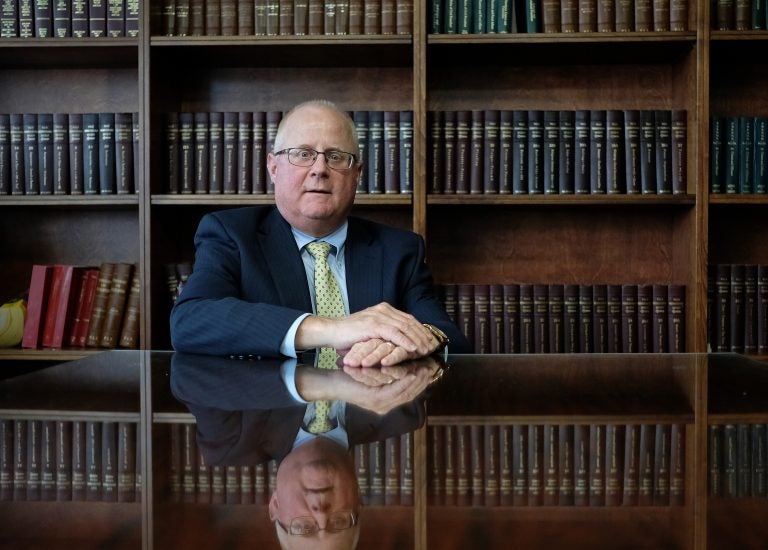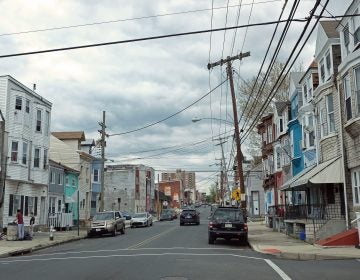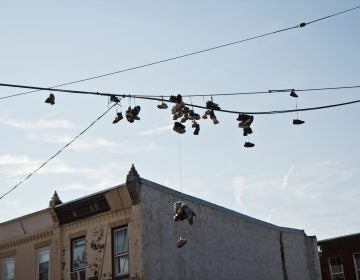Amid criticism, Pa. law enforcement confiscated $15 million in property in FY 18
This controversial legal mechanism allows police departments and district attorney offices to profit from property seized during arrests, even if a suspect is never convicted

Berks County District Attorney John T. Adams in his office in Reading, Pennsylvania. (Matt Smith for Keystone Crossroads)
A recent report from the Pennsylvania Attorney General shows that law enforcement across the state made over $15 million dollars through the use of civil asset forfeiture between 2017 and 2018.
This controversial legal mechanism allows police departments and district attorney offices to profit from property seized during arrests, even if a suspect is never convicted of a crime. This property — which is often tied to drug suspects — ranges from cash, cars and homes to jewelry and flat screen televisions.
While the annual haul –– which covers both the AG itself and 67 county DA offices –– is down from previous years, critics say the report shows that police still regularly take small amounts of cash from suspects — in some instances from innocent people.
Jennifer McDonald, a researcher with the national non-profit Institute for Justice, says these smaller confiscations are a sticking point for reformers. Potentially innocent people caught up in such a seizure rarely find it worth the cost of retaining a private lawyer to retrieve a few hundred dollars or less.
“For district attorneys to say, ‘Someone has $175 dollars in their wallet. We can call that drug money,’ is concerning. That means anyone who happens to be carrying cash at the wrong place at the wrong time can have their property taken and they’re very likely to not get it back,” she said.
Although the state legislature and court rulings have moved to tighten Pennsylvania’s forfeiture policies, McDonald hopes the state implements more reforms to protect innocent people.
Institute for Justice has previously sued over abuses linked to asset forfeiture in Philadelphia, where use of this tool has declined dramatically over the past decade. Although forfeiture petitions continue to bring in over a million dollars a year in Philadelphia, a Keystone Crossroads investigation earlier this year showed suburban and exurban jurisdictions had eclipsed big cities in their use of forfeiture.
The recent AG report showed that the main subject of that story, Berks County DA John T. Adams, brought in $1.8 million between June 2017 and June 2018 –– more than any other county.
Adams said this reflects his efforts to squash major drug organizations. He credited his county detectives with executing several high-profile busts, including the breakup of a large synthetic marijuana ring that generated hundreds of thousands of dollars.
“Part of our fight against the drug trade is to strip the profits that are made by the drug dealers and the drug organizations so they can’t reap the benefits of their illicit activity,” he said. “[Forfeiture] takes away the profits of their drug dealing. It takes away their incentive to sell drugs.”
Adams said his office had recently raised the minimum amount of cash it would seize to $500 in most cases to prevent instances in which innocent people surrendered property because it was too costly to fight back.
Adams acknowledges that the state’s forfeiture laws hold some potential for abuse — that it is largely up to individual DAs to implement controls on property confiscation.
“We know there’s a lot more scrutiny now,” he said. “We welcome that.”
Asset Forfeiture Report 17-18 by Ryan Briggs on Scribd
WHYY is your source for fact-based, in-depth journalism and information. As a nonprofit organization, we rely on financial support from readers like you. Please give today.






